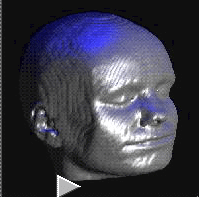Feature-based sculpting

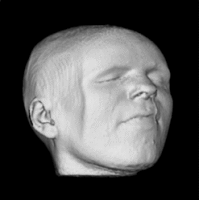
Simulation of facial expressions. A volumetric head is converted to F-rep using trilinear interpolation (left image). The head is sculpted with space mapping defined by displacements of control points linked to the features of the object (right image). The displacements define scalar values in scattered points. These scalar values are interpolated by a volume spline based on the Green's function.
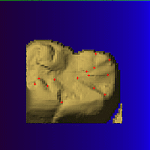
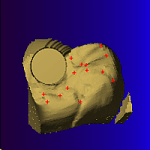
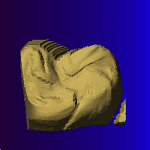
Dental care application. A standard tooth (left) is used to design the shape of an inlay for a tooth with a cavity (center). Corresponding features of these teeth are used to define displacements of the control points (red markers). The standard tooth is deformed by the non-linear mapping that results in the tooth shape without a cavity (right).
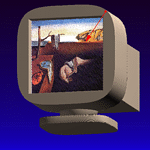

Deforming constructive solids. The use of inverse mappings allows us to apply sculpting operations to set-theoretic objects. A monitor is deformed with one control point (red arrow shows its displacement).
Chewing process modeling. The chewing process for the volumetric head has been modeled using sculpting. Animation:
Details on feature-based sculpting can be found in the paper:
Savchenko V.V., Pasko A.A., Kunii T.L., Savchenko A.V. “Feature based sculpting of functionally defined 3D geometric objects”, Multimedia Modeling. Towards Information Superhighway, T.S.Chua, H.K.Pung and T.L.Kunii (Eds.), World Scientific, Singapore, 1995, pp.341-348.
